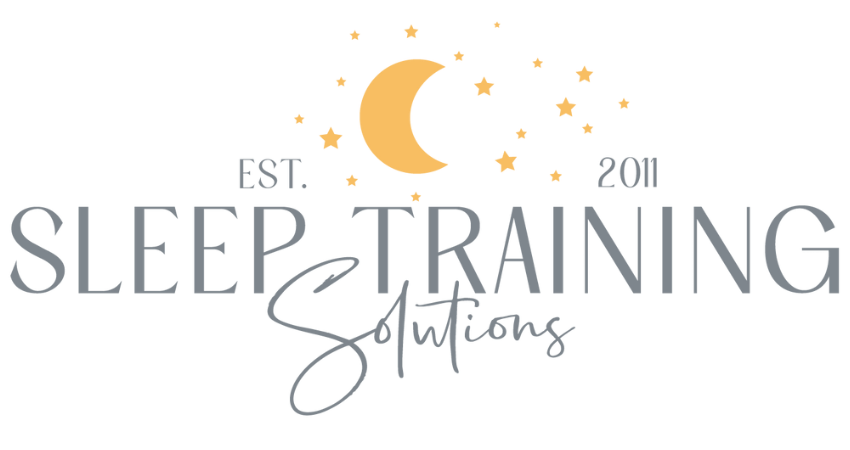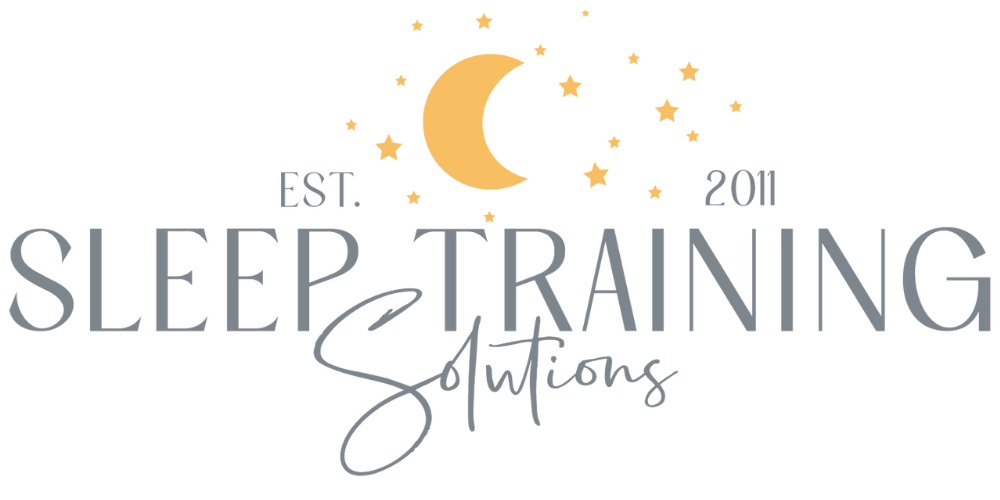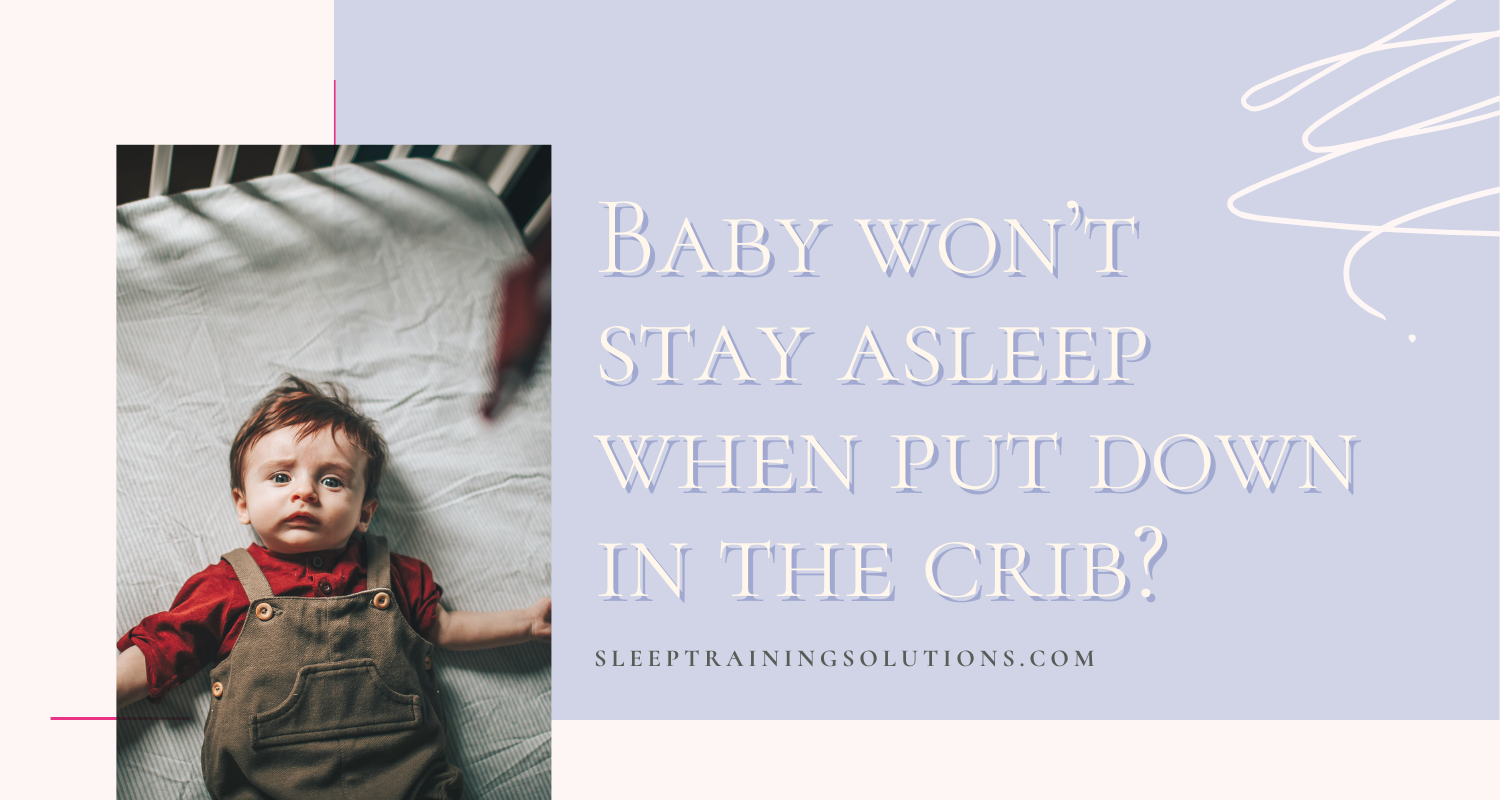How and when to sleep train your baby
Your baby is up all night and you’re exhausted jumping through hoops to get her back to sleep. She can’t fall asleep without you doing something for her (feeding, rocking, popping the pacifier in…) and you know she needs a nudge from you to start learning how to do it on her own, but you don’t know where or when to start! Here are some tips for when and how to start sleep training!
What exactly IS sleep training?
Sleep training is the process of teaching your baby how to fall asleep at bedtime and naptime (and back to sleep in the middle of the night) without you doing a percentage of the work FOR him. It’s helping your baby realize that he can fall asleep on his own rather than needing someone to take charge and get him drowsy (or asleep) first.
What are the main methods for sleep training?
There are four primary methods of sleep training: pick-up put-down, stay in the room, leave and check, and cry it out.
Pick-up put-down is a method best used for younger babies up to 3 months to help baby get used to the flat surface of the crib or bassinet. You lay baby down in the crib or bassinet when they’re drowsy, wait a short interval if they start to fuss, then pick up and comfort and keep repeating until baby falls asleep or you do a few rounds to just start getting baby used to the flat surface. The problem with this method is when parents use it past the newborn stage. I The goal of sleep training is to put baby down awake and they learn to self-soothe to sleep without you getting them drowsy first. This method relies on baby being drowsy (starting the process from fully awake would take a long time to get baby to sleep and you want to teach baby to fall asleep without needing to be constantly picked up!). Because I don’t see this as a helpful sleep training method, this is one of the things we cover in the Newborn Foundations program to help baby get used to not always getting fed to sleep!
Staying in the room is a method where you sit somewhere in the bedroom and offer comfort after you’ve put baby in the crib awake and he’s learning how to self-soothe to sleep independently. You’re not doing the work for him, but you’re there to offer comfort during the process.
Leave and check is a method where you would lay baby in the crib awake, offer some comfort, and then leave the bedroom for a certain amount of time, going back in for comfort checks at intervals.
Stay in the room and leave and check are the two methods I utilize in both my baby sleep course and individual consultations.
Cry-it-out (CIO) or extinction is perhaps the best-known method. It’s what people think of when they think of sleep training. But in my opinion, it should be the last method for babies because this is the method with the most amount of crying. With this method, you put baby down awake, leave the room, and let him console himself to sleep without any help from you.
When should you start sleep training?
Every situation is unique, but in general, sleep training is an option for babies who are 4 months or older and have no unresolved medical issues. 4-6 months is the sweet spot for many families to start to sleep train.
I have worked one-to-one with parents of 3-month-olds who are in the medical profession returning to work and needing to help reduce the night wakings (0-1 wakings each night) so they can return safely (and not exhausted!) to work. But if you’re sleep training on your own or with an online course that doesn’t offer follow-up support, I would wait until your baby is 4 months old.
If your baby has reflux and you’re in the process of working with your pediatrician to find the right course of treatment for your baby, I would wait until you and your care team have found a solution that makes your baby more comfortable so that during sleep training, you won’t worry that any crying is due to the discomfort of reflux.
Should you sleep train when your baby hits the 4-month regression?
If your baby was falling asleep with some help from you, getting some good chunks of sleep, and taking solid naps and then all of a sudden his sleep turns upside down and everything is a struggle…you’ve hit the 4-month regression!
This post talks about why the 4-month regression is happening.
When the 4-month regression hits, many parents start adjusting to the increased night wakings by feeding back to sleep (when previously, their baby wasn’t waking up to eat or only waking once for a full feed) or doing something else to get their baby back to sleep.
When you start sleep training as soon as you see those changes, it’s easier to get on track with sleep because you’re not letting any of these new behaviors become habits!
Some families choose to work with me before that regression starts so they can stay ahead of it and they can all get through it much easier. But starting during the regression will be helpful too!
There are so many pieces to successfully sleep training - Download your free PDF and get weekly sleep tips to help set you up for success!
Can you continue breastfeeding while sleep training?
100% YES!
During sleep training, we remove sleep props (like feeding to sleep) so your baby can learn to fall asleep independently.
That doesn’t necessarily mean we remove night feeds. (Always consult with your pediatrician about whether your baby is ready to night wean.) If you do get rid of night feeds, the total number of ounces in a 24-hour period stays the same, but instead of eating 24 hours a day, feeds are in a 12-hour period.
The tricky part, once your doctor has given the green light for night weaning, is figuring out if your baby is truly ready for it. That’s something I work with clients to make 100% sure of in my baby sleep class and one-to-one consultations.
Whether your baby is getting a night feed or not, we are shifting your baby’s thinking about milk from using it to get drowsy and fall asleep to it being a source of nutrition. Sleep training helps your baby understand that breastfeeding (or bottles) is for food, not sleep.
The result is that your baby will be able to fall asleep on her own AND feeds get better because she’s staying awake for the entire feed. Win-win!
How to start sleep training
Deciding to start sleep training shouldn’t happen at 5pm the night you want to start :)
There are several things to make sure you have in place before you start. My Ultimate Sleep Training Readiness Checklist details everything from the factors that will determine success with sleep training, to getting everyone on board, how to work with daycare, and figuring out your first step of the process.
When you feel prepared about sleep training, the process will go much more smoothly and be easier for both you and baby!
How long does sleep training take?
It depends on the method you choose, your baby’s temperament and how consistent you are following the plan.
When you are using the right method for your baby and follow it without caving (reintroducing sleep props), parents typically see improvement by night 3.
If you’re sleep training on your own and not seeing any progress made the first week, something needs to be changed!
Last thoughts on sleep training
Your mindset with sleep training matters. If you think it’s going to be hard or not successful - you’ll have a challenging experience getting the results you’re looking for. If you go into it with the attitude that it will be hard but you have a plan and know it will work - it will, and probably more quickly than you think!
Your baby won’t remember sleep training and you’ll still have a strong bond with your baby after sleep training. A 2023 research study found sleep training does not negatively affect the infant-parent bonding. In fact, many of the parents I’ve worked with said their babies seem so much happier post-sleep training - and this makes sense because an overtired baby is more crabby!
Not every method works for every baby. If you’re DIYing the sleep training process and can’t seem to make progress, it may be the method you’re using.
Your job in the sleep training process is to offer sleep at the right time, remove the sleep props you were previously offering, and be consistent. When you do those things, your baby can more quickly learn how to self-soothe independently!
If you need guidance with sleep training your baby, I’d love to help you get your little one sleeping through the night as quickly and easily as possible. Schedule an evaluation call with me today!
Related Posts:
This post is for informational purposes only and may not be the best fit for you, your child and/or your personal situation. It shall not be construed as medical advice. The information and education provided here is not intended or implied to supplement or replace professional medical treatment, advice, and/or diagnosis. Always check with your child’s physician or medical professional before trying or implementing any information read here.






